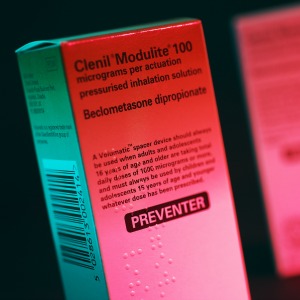Asthma medications ‘may suppress children’s growth’

The height of children who take inhaled corticosteroid (ICS) drugs is reduced by an average of half a centimetre in the first year of taking the drug, concludes a gold-standard evidence review.
Two reviews published by the Cochrane Library today looked at the available evidence and concluded that only the ‘minimal effective dose’ of ICS is used in children with asthma until further data becomes available.
The first review looked at 25 trials involving 8,471 children with mild to moderate persistent asthma. The trials tested six of the seven ICS drugs available worldwide, excluding triamcinolone.
Researchers found that while the average growth rate in control groups was around 6cm to 9cm, children who took daily ICS drugs grew 0.5cm less than their peers on placebo or non-steroidal drugs.
The reviews’ lead author, Dr Linjie Zhang, associate professor at the Federal University of Rio Grande in Brazil, said that the effects on growth were ‘minor’ compared to the known benefits of the drugs for controlling asthma.
Dr Zhang also noted that the effect on growth suppression did not appear to be cumulative, and is less pronounced in subsequent years of taking ICS drugs.
A second systemic review, also published today, looked at data from 22 trials on the effects of ICS dosage on growth. Researchers found that children with mild to moderate asthma who took a low to medium dose of inhaled steroids (about one puff less per day) grew on average a quarter of a centimetre more than those on higher dosages.
The authors of the reviews are now calling for further trials that directly compare different ICS drugs and dosages. Professor Francine Ducharme, professor of paediatrics at the University of Montreal, who co-authored both reviews, said that it was a ‘matter of major concern’.
She said: ‘Only 14% of the trials we looked at monitored growth in a systematic way for over a year. We recommend that the minimal effective dose be used in children with asthma until further data on doses becomes available.’
Visit Pulse Reference for details on 140 symptoms, including easily searchable symptoms and categories, offering you a free platform to check symptoms and receive potential diagnoses during consultations.









